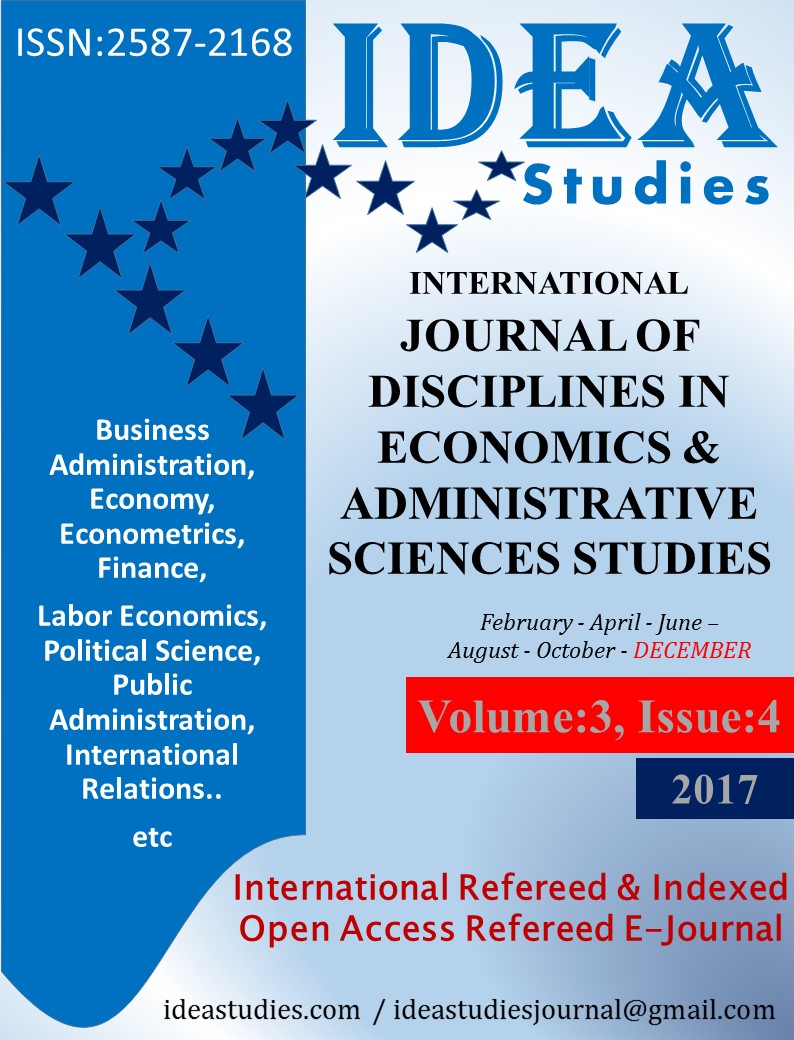Author :
Abstract
Kıbrıs Adası 1878 yılında Britanya İmparatorluğunca işgal edildikten sonra adada vergilerin daha etkin toplanıldığı görülmektedir. Vergilerin etkin toplanılmasının yanında yeni vergi olarak sadece iki vergi tahsil edilmeye başlamıştır. Britanyalıların idaresine girdikten sonra adada her yıl düzenli çekirgelerle mücadele kampanyaları yapılmaya başlanmış ve bunu finanse etmek için 1881 yazında Çekirge Vergisi adı altında bir vergi alınmaya başlamıştır. 19.yy boyunca adanın en önemli sorunlarından birisi çekirgeler olmuş ve yeni yönetim çekirgelerle mücadele edebilmek için bu yeni vergiyi icat etmiştir. Verginin toplanması için özel bir dönem belirlenmemiş ve mevcut vergilere belirli oranlarda ilaveler yapılarak tahsil edileceği için de tahsilatı yıl içine yayılmıştır. Dünyada başka bir örneği olmayan bu verginin, adada yaşayan herkesten belirli oranlarda alınıyor olması ve her yıl düzenli toplanması sonucunda Çekirge Fonunda önemli miktarda para birikmiştir. Ada bütçesinden ayrı olarak toplanılan Çekirge Fonu, çekirge kampanyaları dışında adanın bayındırlık hizmetlerinde de kullanılmıştır. Çalışmada çekirge vergisinin konuluşu, vergiyi oluşturan kalemlerin değişimi, kaç yıl toplandığı, yürürlükten kaldırılışı ve çekirge fonunda biriken paranın farklı kullanımları ele alınmıştır. Çekirge Vergisi olarak bilinen 1881 yılında yayınlanan 12. Emirnamenin özgün metni ve Türkçe çevirisi de yazının ekinde sunulmuştur.
Keywords
Abstract
Taxation has been gathered more effectively since Cyprus was occupied by the British Empire in 1878. Besides the effective collection of taxes, only two new taxes had begun to be collected. After British occupation, locust campaigns were started in 1881, and arranged every year that the locust campaign expenditure supported by new tax namely “Locust Tax”. During the 19th century, one of the most important problems of the island was the locust, and the new administration invented this new tax to destruct locusts. There was no exact period for the collection of tax which had been spread through the whole year and, its rates were determined existing tax rates at certain rates. A significant amount of money had accumulated in the Locust Fund as a result of regular collection, this tax was a unique in the world that being picked up at certain rates from every person in the island. The Locust Fund, which was collected separately from the goverment budget, had also been used in the public works apart from the locust campaigns. The study examines the use of locust tax, the change of schedules, the number of years in which they were collected, the suspending the tax, and the different uses of the locust fund. “Ordinance No XII, 1881” known as the Locust Tax, and its Turkish translation are included in the text.
Keywords
- Great Britain, Colonial Office, Cyprus Blue Book, (http://www.cyprusdigitallibrary.org.cy/collections/show/3 1887-1946 arasında yayınlanmış bütün nüshalar taranmış, metin içinde sayı ya da tarih verilmiştir)
- Great Britain, Colonial Office, The Cyprus Gazette, (http://www.cyprusdigitallibrary.org.cy/collections/show/2 1878-1960 arasındaki bütün nüshalar taranmış, metin içinde sayı ya da tarih verilmiştir.)
- Gürel, Şükrü S. Kıbrıs Tarihi 1, İstanbul, Kaynak Yayınları, 1984.
- Hill, George, Kıbrıs Tarihi, Osmanlı ve İngiliz İdaresi Dönemi 1571-1948, (Çeviren Nazım Can Serbest), İstanbul, Türkiye İş Bankası Kültür Yayınları, 2016
- Jennings, Ronald C. “The Locust Problem in Cyprus”, Bulletin of the School of Oriental and African Studies, Vol.51, No. 2, 1988, ss.279-313.
- Reddaway, John. Burdened With Cyprus, Nicosia, Rustem Bookshop, 2001.
- Richter, Heinz A. Çağdaş Kıbrıs’ın Kısa Tarihi, (Çeviren: Ali Çakıroğlu), Lefkoşa, Galeri Kültür Yayınları, 2011.
- Varnava, Andrekos. British Imperialism in Cyprus, 1878-1915, Manchester University Press, 2009.Zia, Nasım. Kıbrıs’ın İngiltere’ye Geçişi ve Adada Kurulan İngiliz İdaresi, Ankara, Türk Kültürünü Araştırma Enstitüsü Yayınları No 44, 1975.
